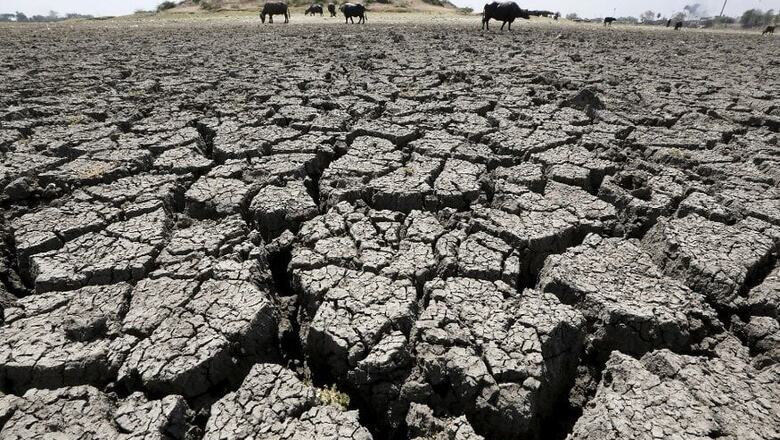
views
As the dispute over their ancestral property was growing more acrimonious by the day, 40-year-old farmer Murat Singh Yadav and his brother Charan Singh decided a partition was the only way to tamp down the discord. But a bone of contention remained between these residents of Jhansi district in Uttar Pradesh. Charan wanted to use water from Murat’s well without paying for it, but an agreement could not be reached. On December 26, 2017, police in Madhya Pradesh’s Chhatarpur district got a call about a blindfolded man found abandoned with both his hands tied. It was Murat. He told the police that, angered at their wish not being granted, Charan, his sons, and relatives drugged him, took him to an undisclosed location and tortured him for over a week. Seeing his condition worsen, they dumped him where he was found.
The whole area falls in the Bundelkhand region, which straddles MP and UP. It is an arid territory that has been facing a crippling drought in recent years with water sources drying up even in mid-winter, forcing many locals to flee. Now, a scientific report published this month that reconstructed meteorological and hydrological droughts in India from 1870-2018 has found that the 41-month-long dry spell from 2015-18 was the longest. And, although not the deadliest, it had a “remarkable impact on reservoir and groundwater storage” suggesting that such long-term droughts could impact “water security in one of the most populous regions in the world”.
The study, “Long-term (1870-2018) drought reconstruction in the context of surface water security in India”, published in the Journal of Hydrology on October 14, was conducted by Vimal Mishra, associate professor in the civil engineering department at IIT Gandhinagar. The report identified “18 meteorological and 16 hydrological droughts”. The five most severe or “deadly” meteorological droughts occurred in 1899, 1876, 2000, 1918, and 1965, while the five major hydrological droughts occurred in 1899, 2000, 1876, 1965, and 1918, the study found. It added, “The meteorological and hydrological drought of 1899 was the most severe in the entire record of 1870-2018.”
A meteorological drought takes place when dry weather patterns dominate an area, and a hydrological drought takes place when low water supply becomes evident, in streams, reservoirs, usually after months of meteorological drought. India is particularly vulnerable to drought since a large section of the population is dependent on agriculture. And agriculture, in turn, is dependent on the monsoons when nearly 80 per cent of the total annual precipitation for the country takes place. The threat of drought is amplified by climate change and desertification and in India, nearly a third of the total area (effectively twice the size of Spain) has been degraded through deforestation, soil erosion or depleted wetlands. This, experts believe, reduces the country's GDP by 2.5 per cent annually.
The study also confirmed that each of the top five "meteorological droughts" were caused by the "positive SST (sea surface temperature) anomalies over the Pacific" and that "ENSO remains the major driver of the monsoon season precipitation in India". It added, "The role of SST variability in Indian and Atlantic Oceans has increased during the recent decades (1980-2018)."
The link between sea surface temperatures and droughts in India is one of concern. The special report by the United Nations Intergovernmental Panel on Climate Change released last month found that surface temperatures for the world’s oceans are rising at an alarming pace, causing marine “heatwaves” and accelerating sea levels. It noted, “Marine heatwaves have doubled in frequency since 1982 and are increasing in intensity” while adding that the global ocean temperatures have warmed every year since 1970, and the rate has more than doubled since 1993.
Although the “severity of the most recent drought (2015-2018)” was considerably lesser than previous droughts, it had the “longest duration (41 months) among all the major droughts in India”, the study found, and warned, “The 2015-2018 drought had a remarkable impact on reservoir and groundwater storage in India suggesting that long-term droughts can influence water security in one of the most populous regions of the world. In addition, rapid groundwater depletion combined with long-term droughts can pose serious challenges for water availability in India.”
The 2015-18 drought-impacted a fourth of India’s total population and affected “surface (reservoir storage) and groundwater availability in both southern and northern parts of India and was linked to El Nino and Indian Ocean Dipole”, it added.
The study utilises long-term data, from 1870-2018, to identify the top five or "deadly" meteorological or hydrological droughts based on overall severity score in the past 150 years.




















Comments
0 comment